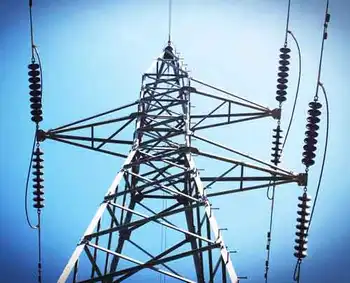Relay system prevents massive outage
In a flash, the station, a key electricity transmission path for Toronto, lost 920 megawatts — enough to plunge a million homes into darkness, a power expert says.
“It could have daisy-chained throughout the whole northeast,” said Frank Finnie, a power consultant with Missouri-based Power Generation Experts.
The stationÂ’s relay system disconnected the troubled site from the rest of the grid, isolating the problem to about 250,000 homes and quelling the ripple effect that had disastrous effects in 2003 when a local Ohio outage led to an international catastrophe that lasted several days.
“It can drag down the rest of the grid. If you lost 250,000 homes after losing 900 megawatts, they stopped it in half the time at least. It should have affected a million people,” Finnie said.
Breakers, transformers and power lines fail, be it from bad weather, a seismic event or plain old age. However, utilities are supposed to have relay protection systems in place to nip the problem in the bud.
When the breaker at Manby caught fire, an alarm signal relayed the problem and disconnected that disabled mechanism from the rest of the power system.
“It means it’s contained as a local outage,” said Alexandra Campbell, spokeswoman for Independent Electricity System Operator, responsible for the day-to-day operations of Ontario’s electrical system.
“When the power went out, it was big enough that there was sort of a blip on the whole power system in Ontario,” she said. “Probably most of the province would have seen that flicker.”
It did what the Ohio-based FirstEnergy Corp. failed to do in the summer of 2003 when its gaffe turned out the lights for 50 million people.
In that case, the companyÂ’s information technology department knew of the problem and was trying to correct it. However, it never alerted the operators routing power through the wires.
As demand grew in the summer heat, the transmission lines began failing one after another.
ItÂ’s still unclear what caused the blaze.
In its 2010 shareholdersÂ’ report, Hydro One said the Manby stationÂ’s circuit breakers are nearing the end of their life and will be replaced by 2013.
Hydro OneÂ’s spokesperson said the faulty breaker had been inspected in 2008, adding that the cause of the fire was still under investigation.
Campbell, meanwhile, said the city wasnÂ’t near its hydro capacity and the fire had nothing to do with a lack of available power. The heat wasnÂ’t likely a factor, either, she added.
Related News

Pennsylvania residents could see electricity prices rise as much as 50 percent this winter
PITTSBURG - Energy costs for electric customers are going up by as much as 50% across Pennsylvania next week, the latest manifestation of across-the-board energy price increases impacting gasoline, heating oil, propane, and natural gas.
Eight Pennsylvania electric utilities are set to increase their energy prices on Dec. 1, reflecting the higher cost to produce electricity. Peco Energy, which serves Philadelphia and its suburbs, will boost its energy charge by 6.4% on Dec. 1, from 6.6 cents per kilowatt hour to about 7 cents per kWh. Energy charges account for about half of a residential bill.
PPL Electric Utilities, the Allentown company…





